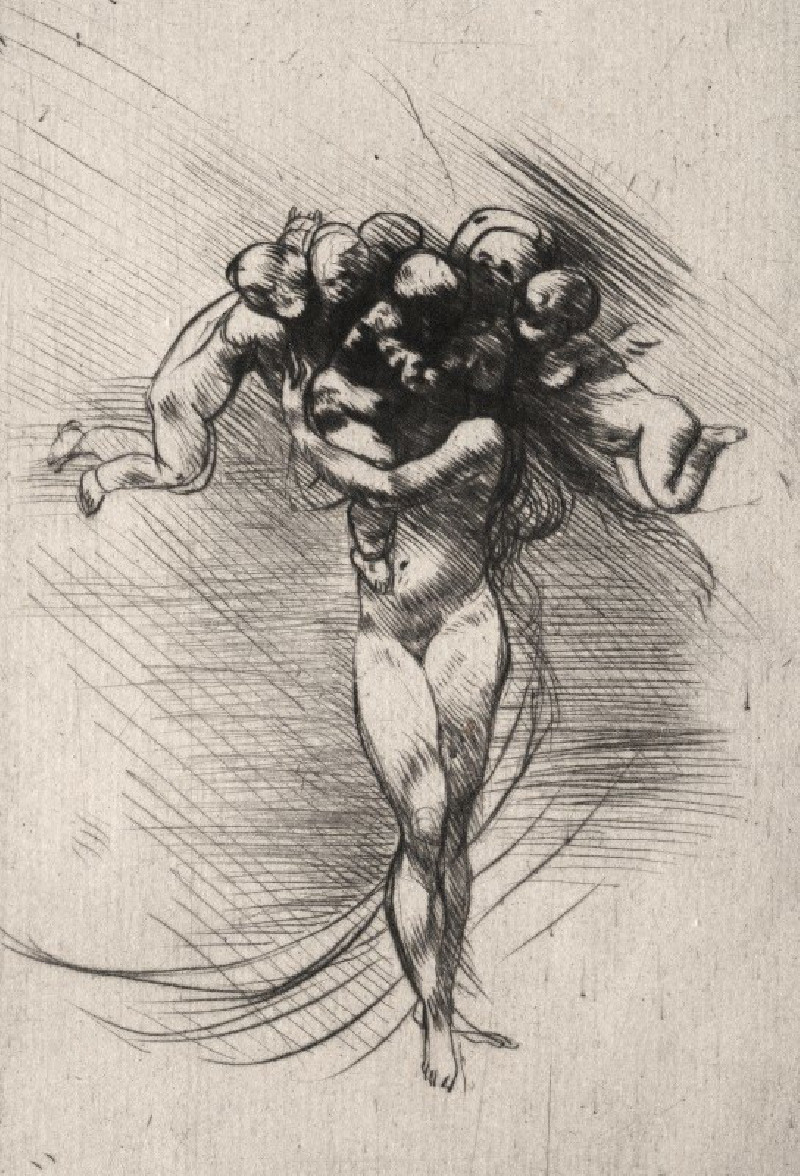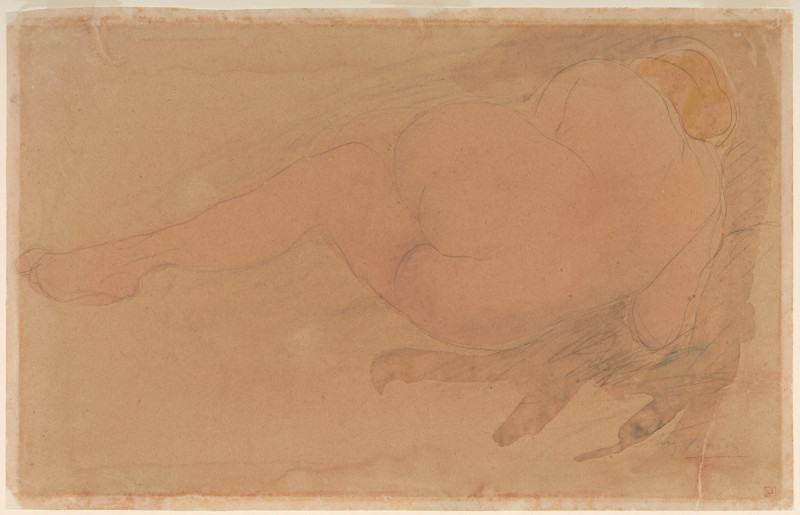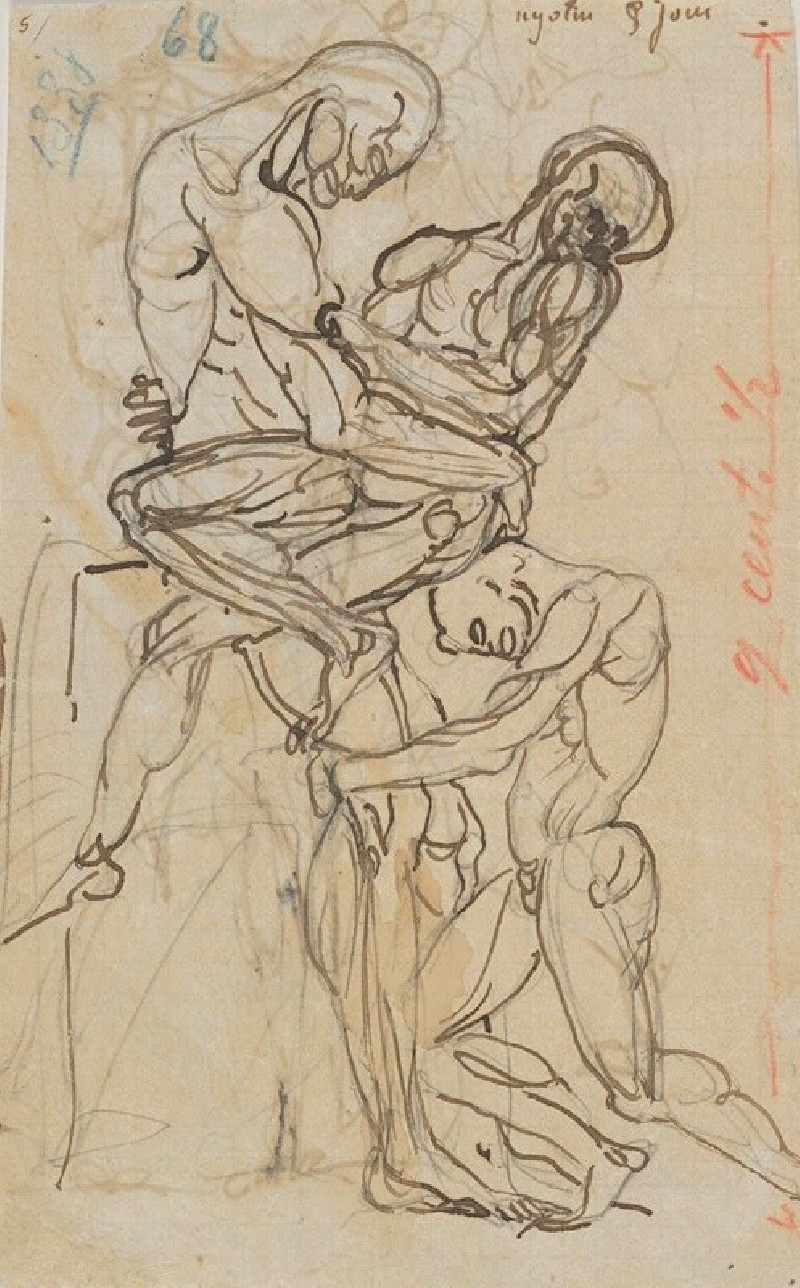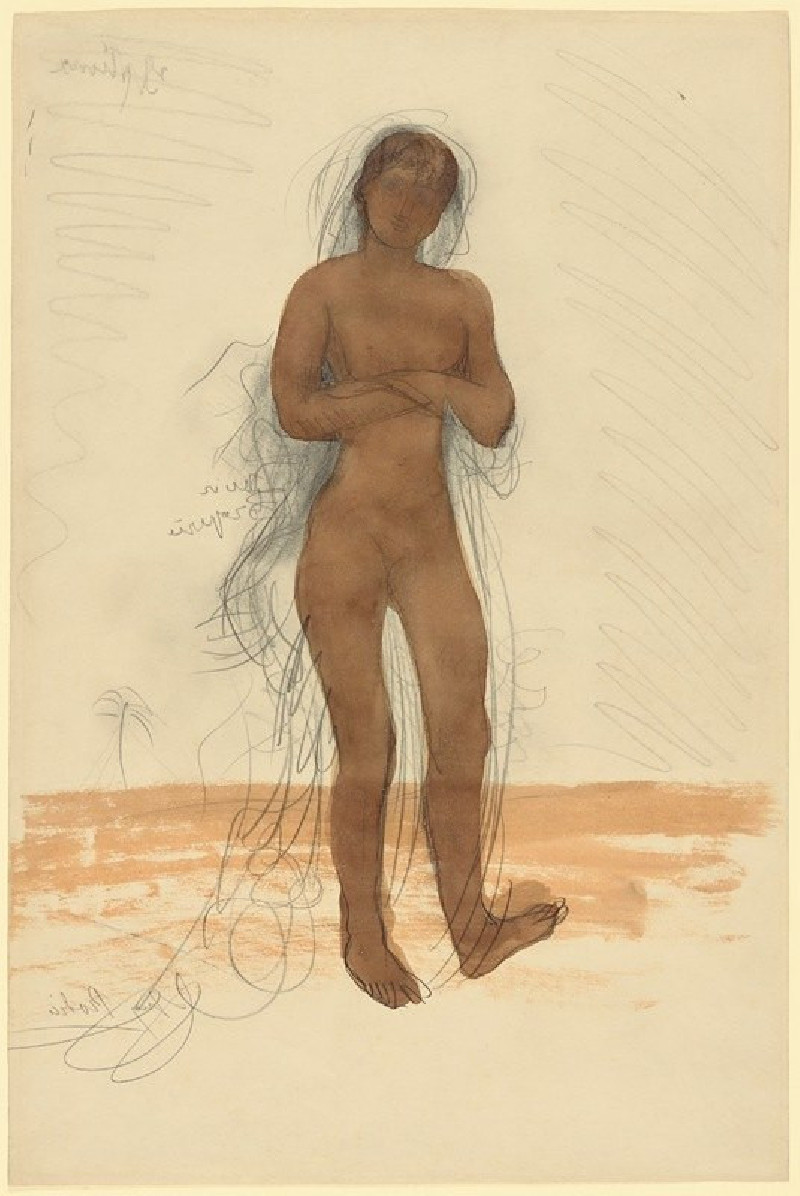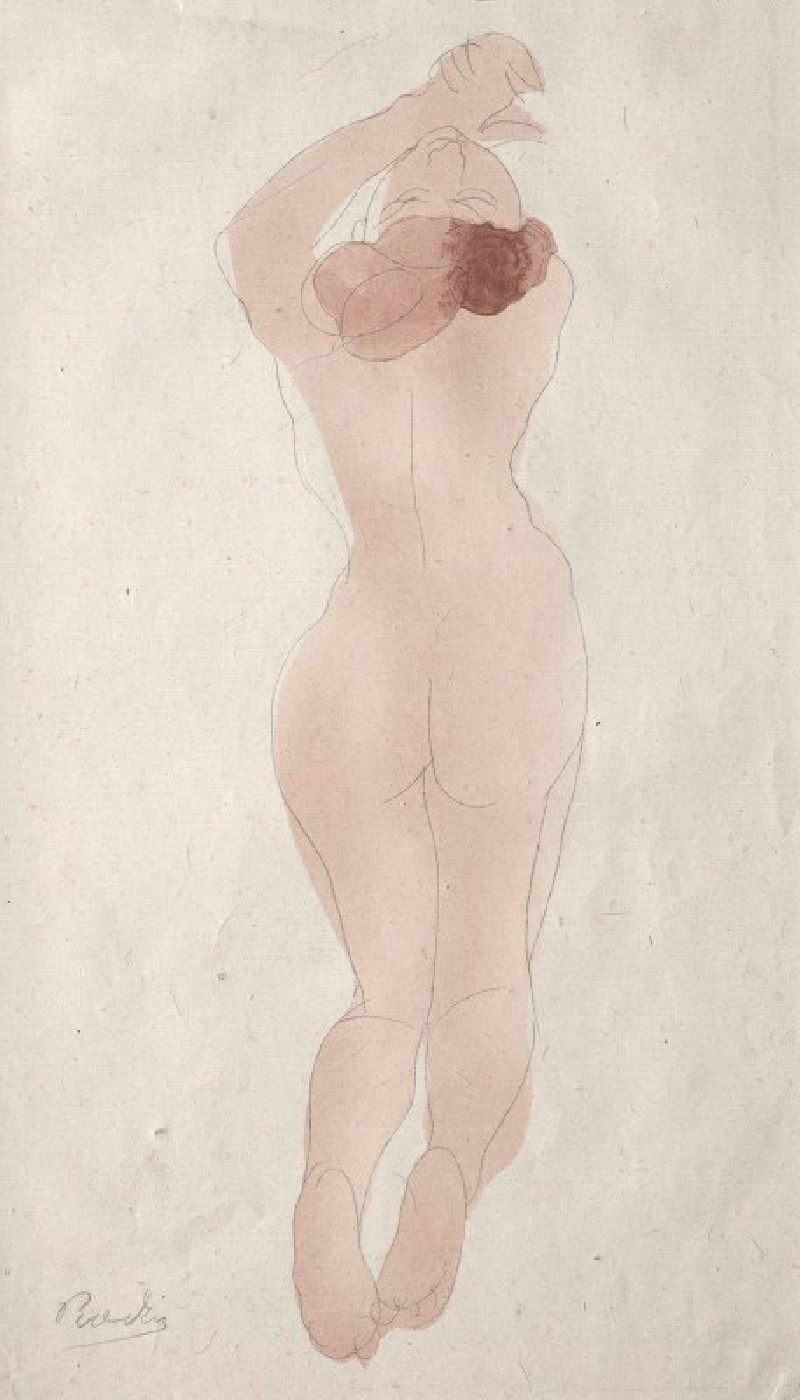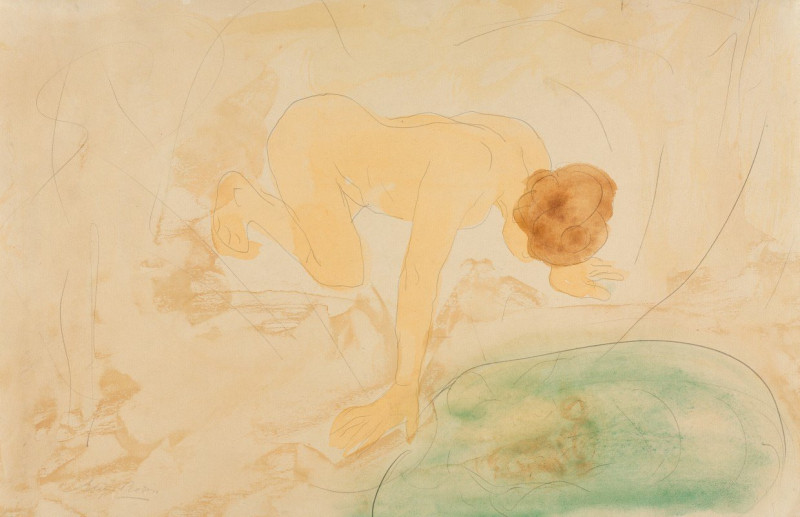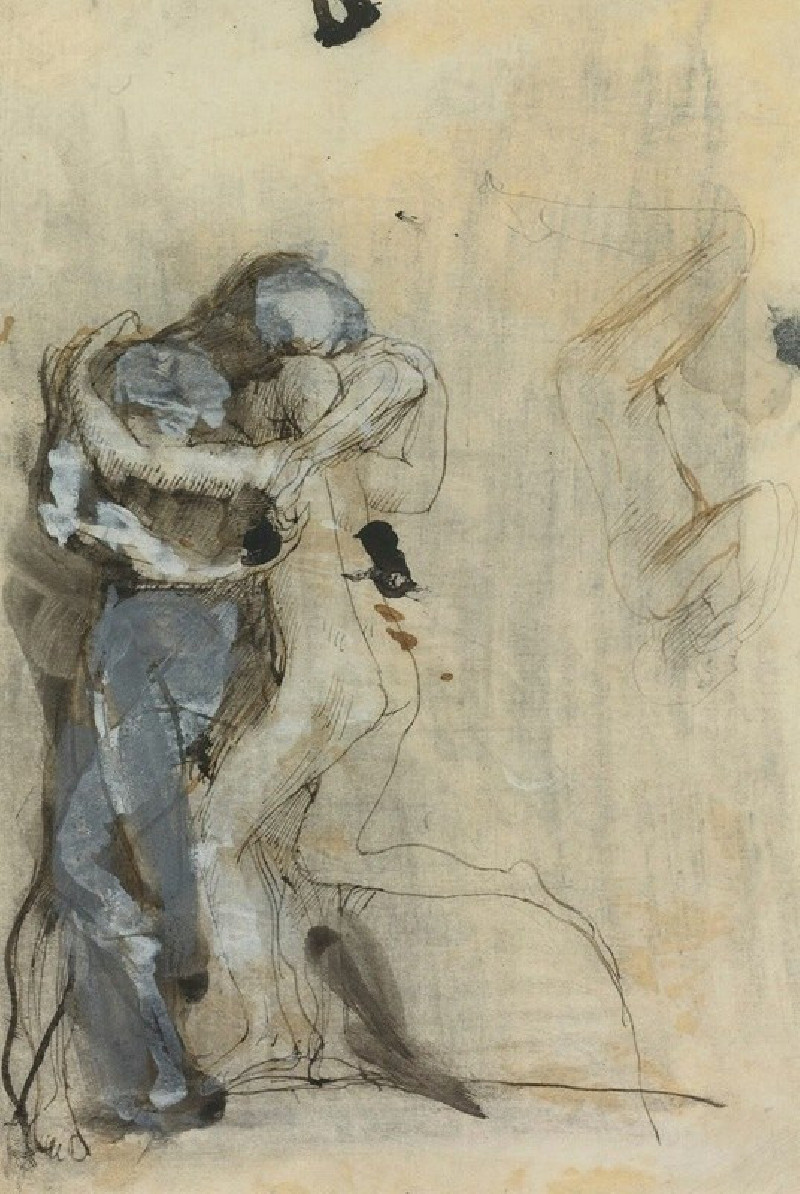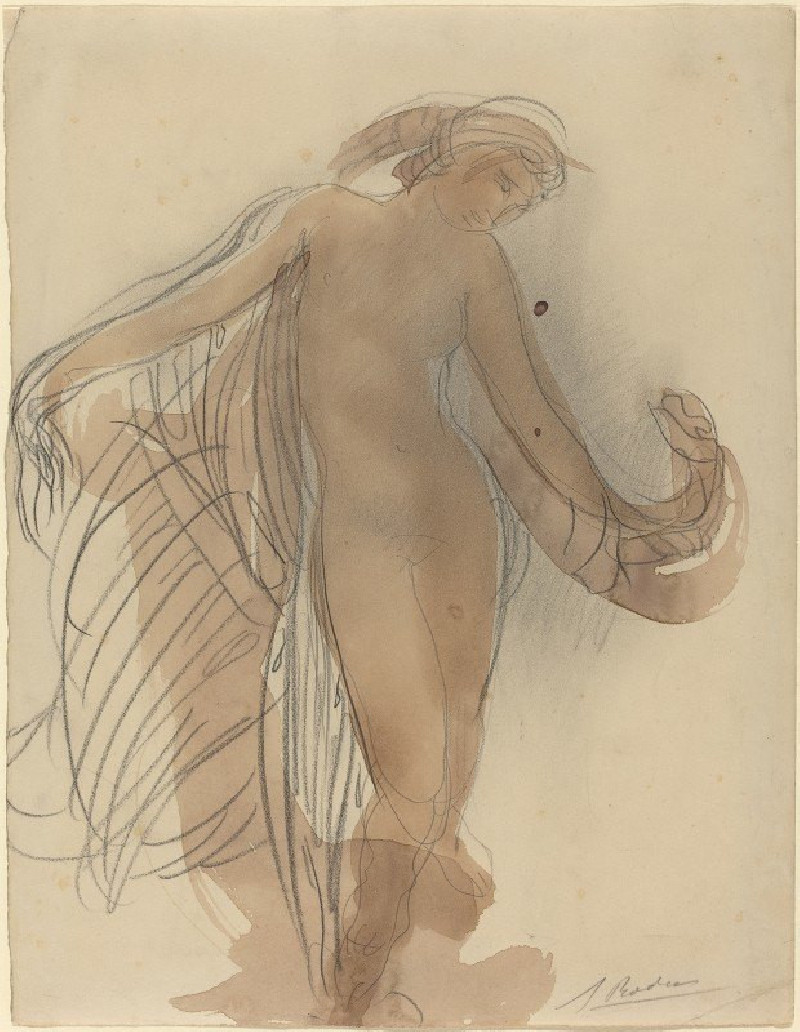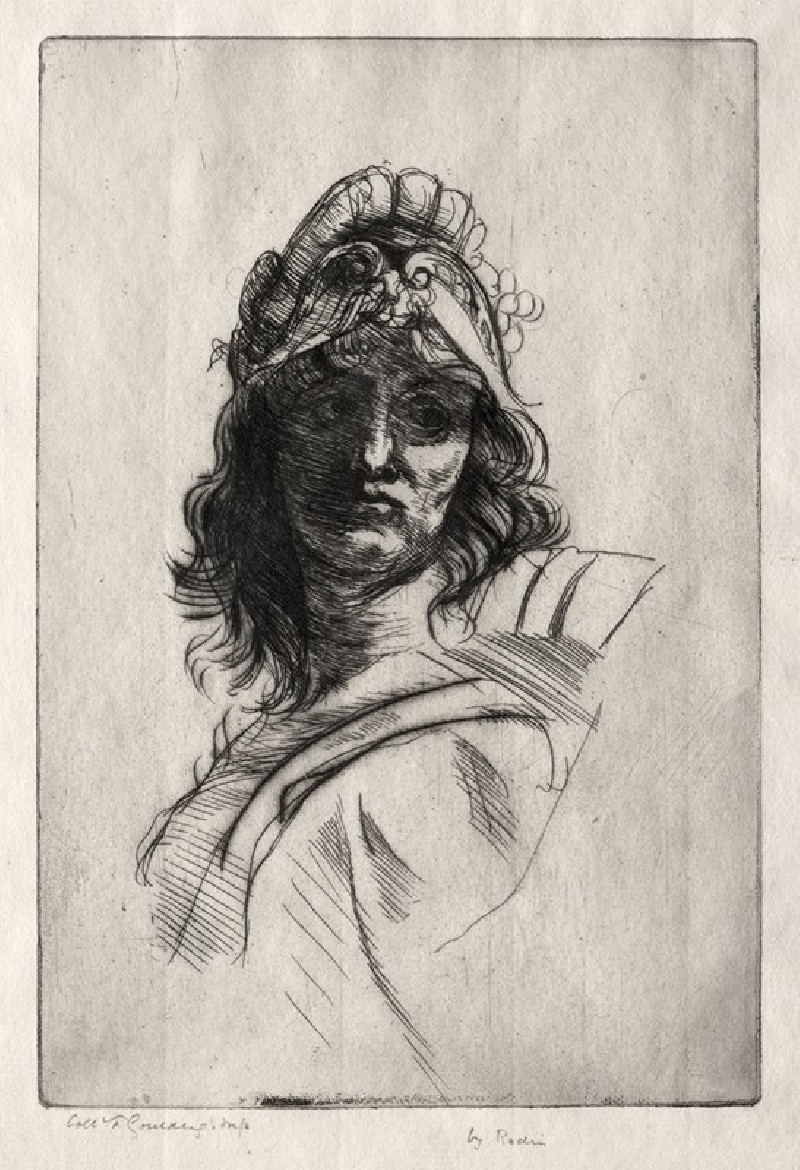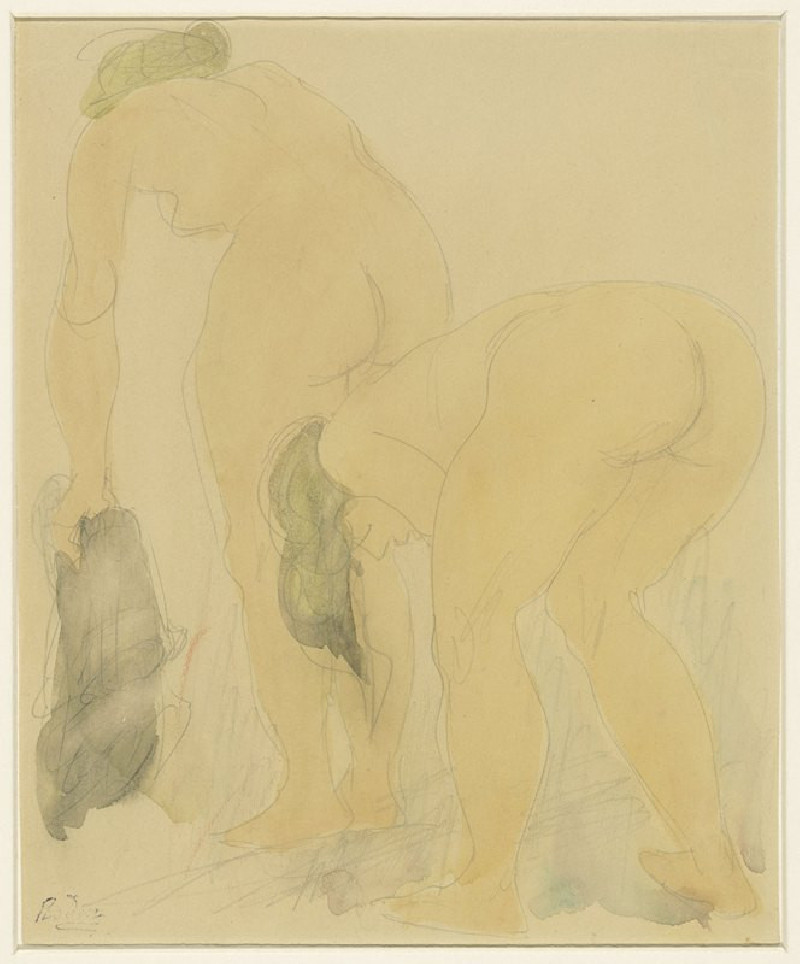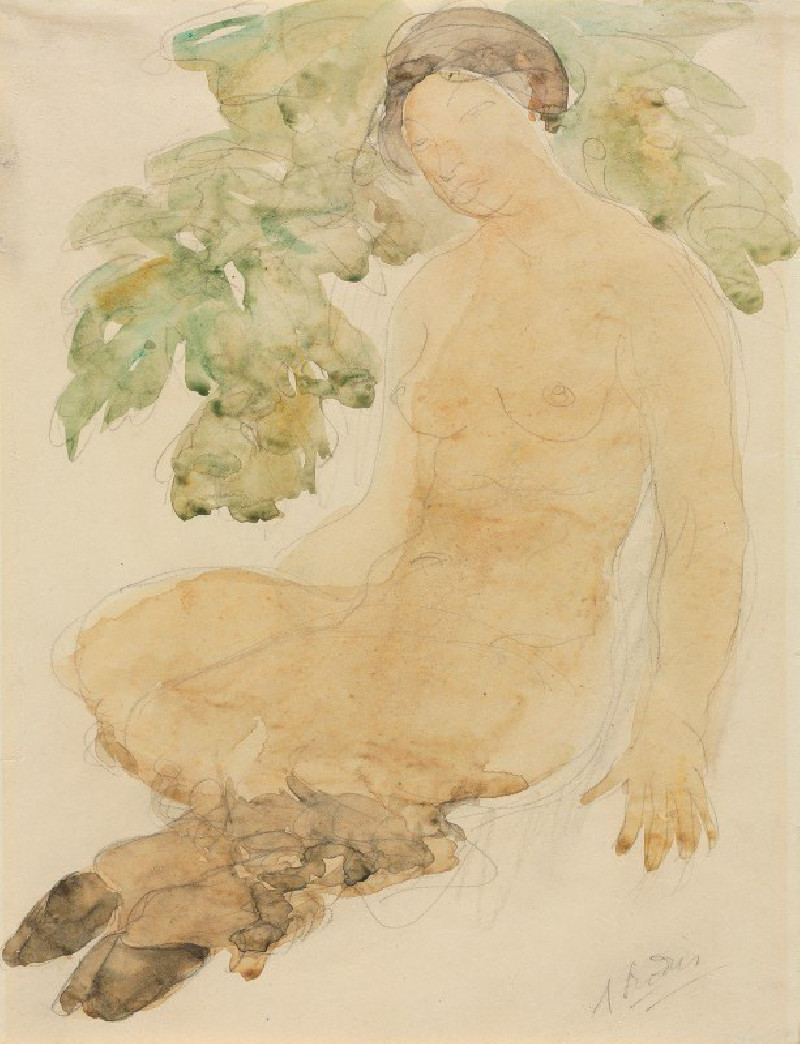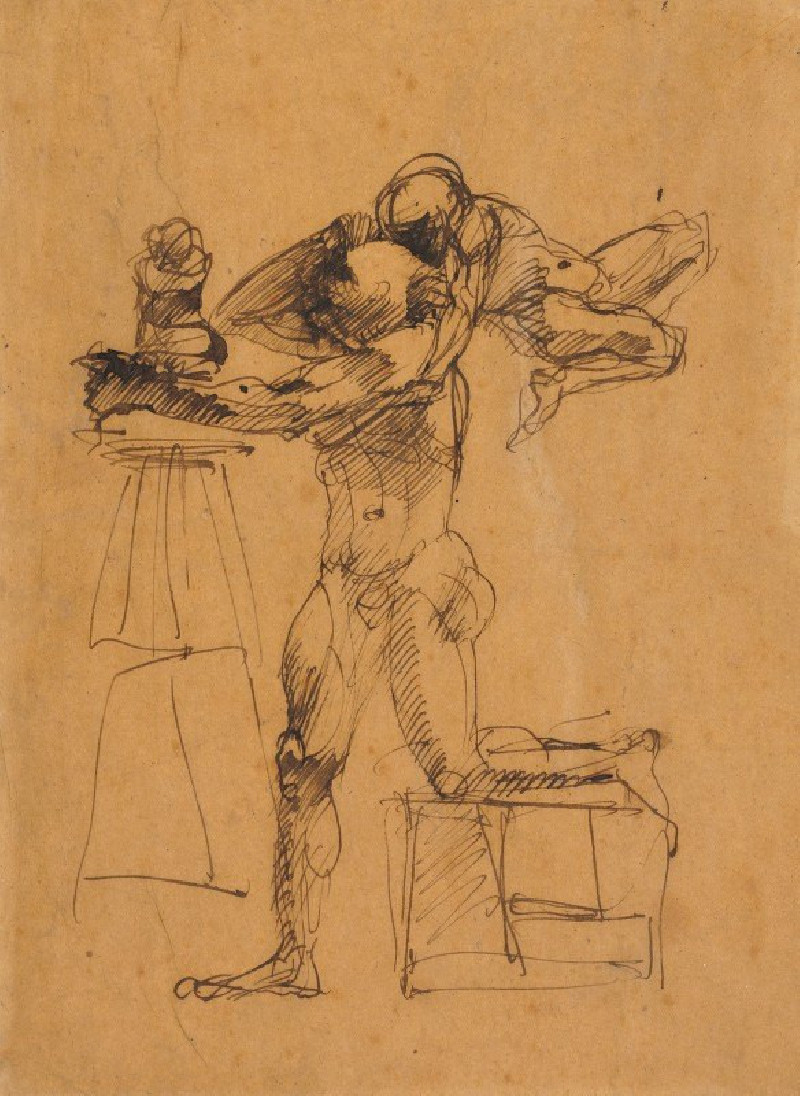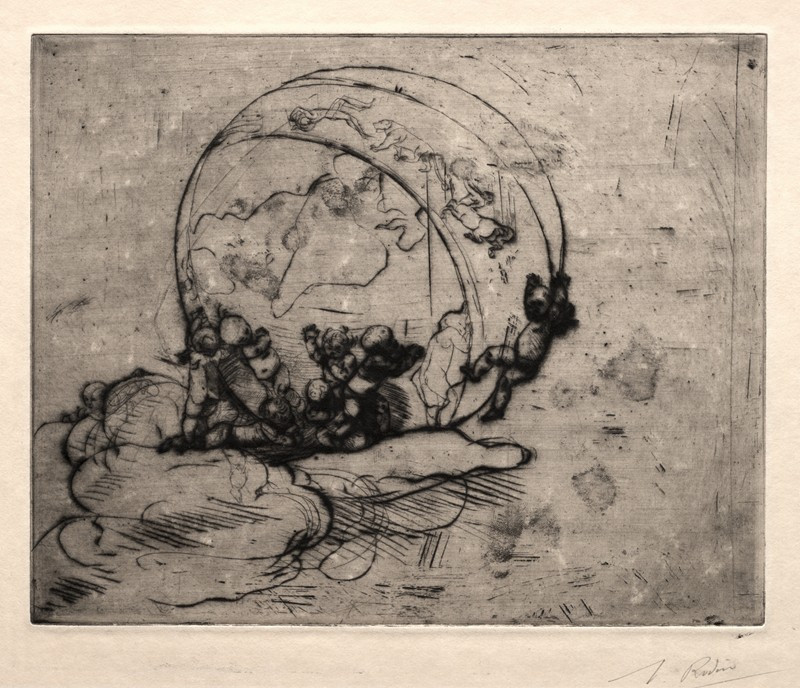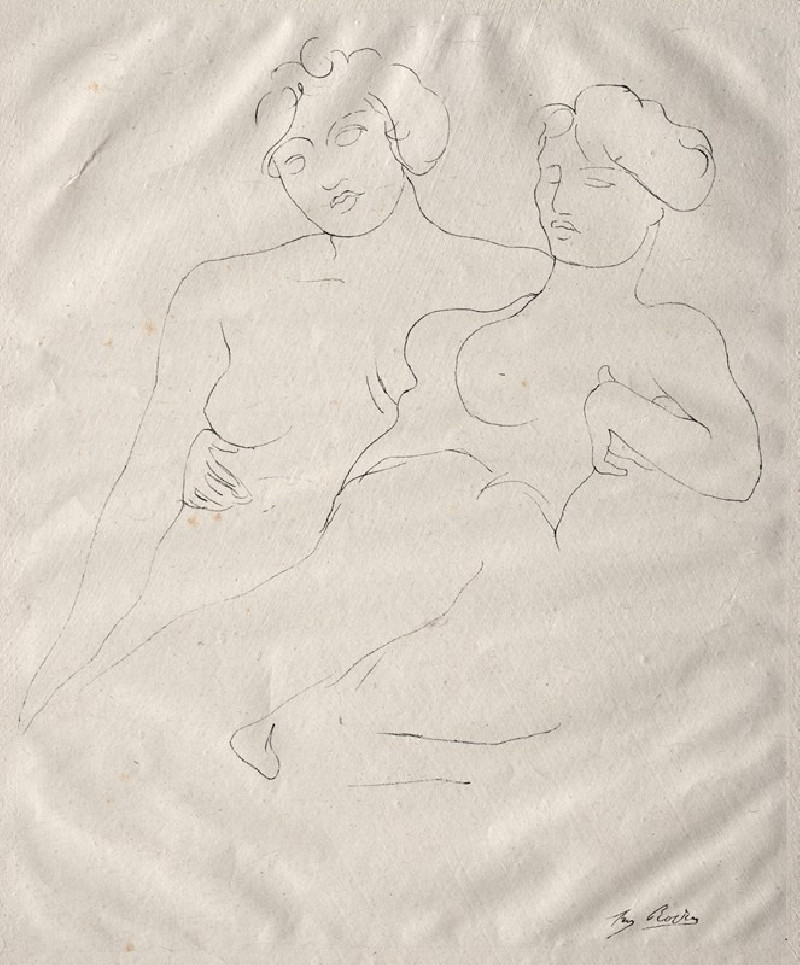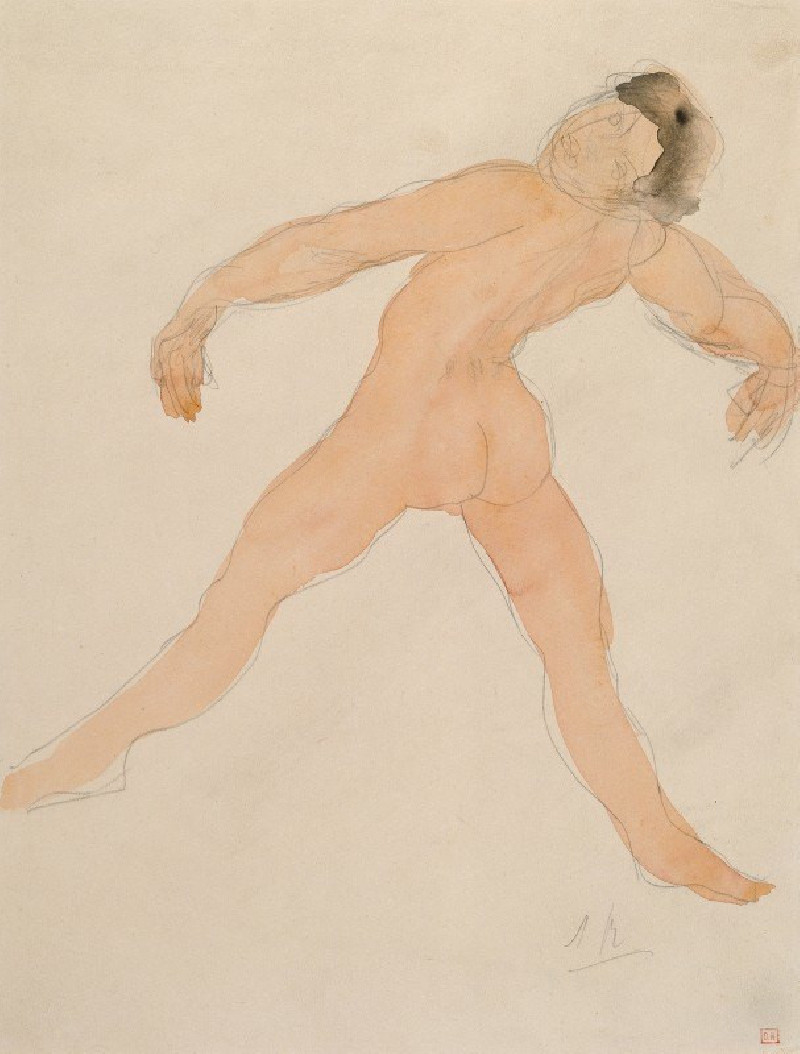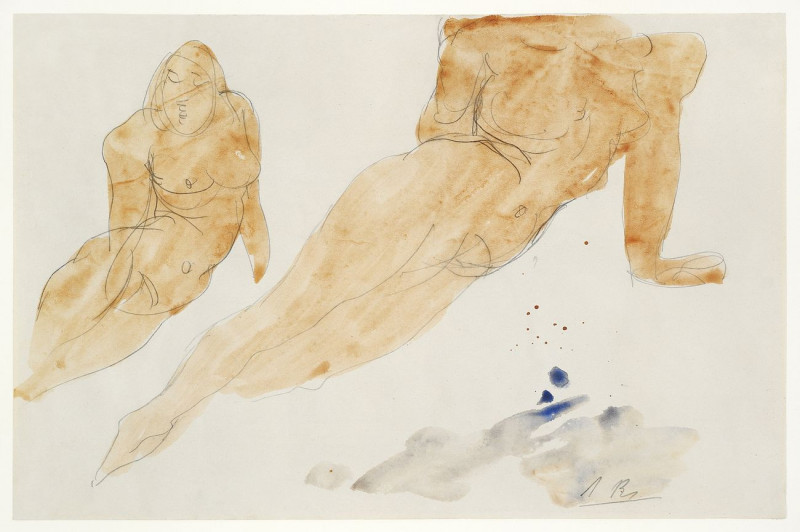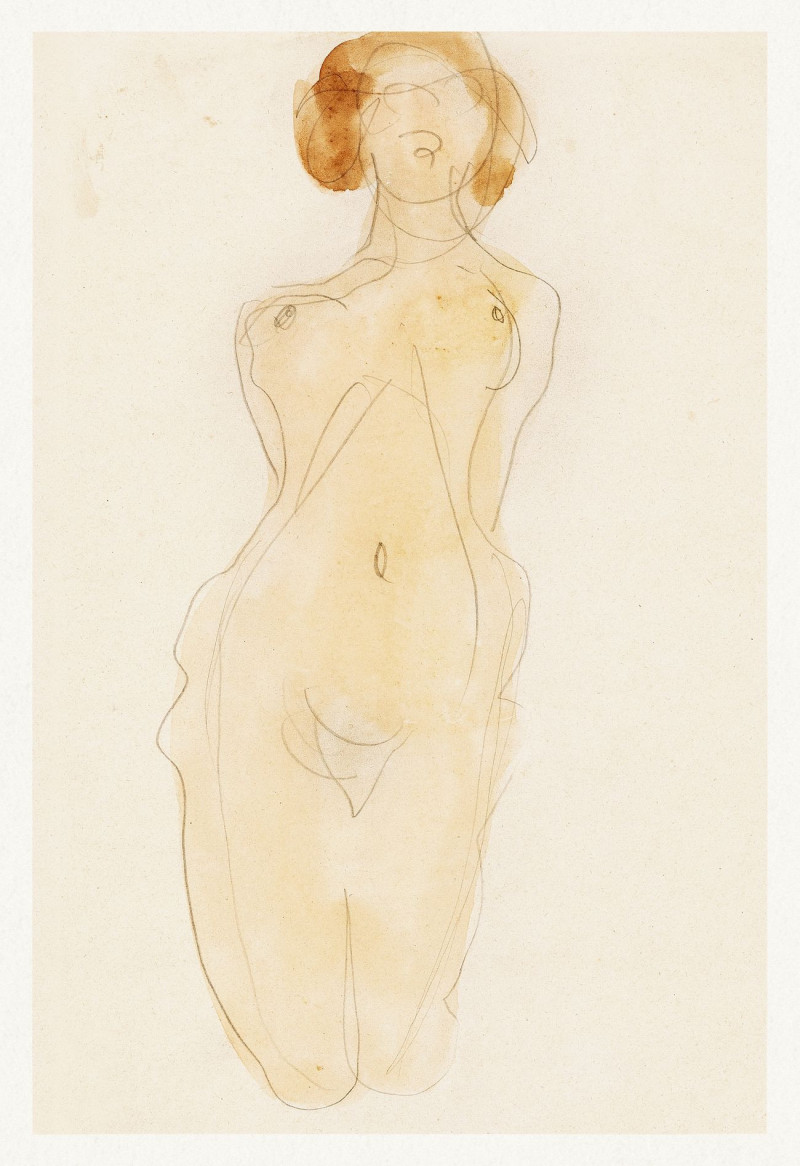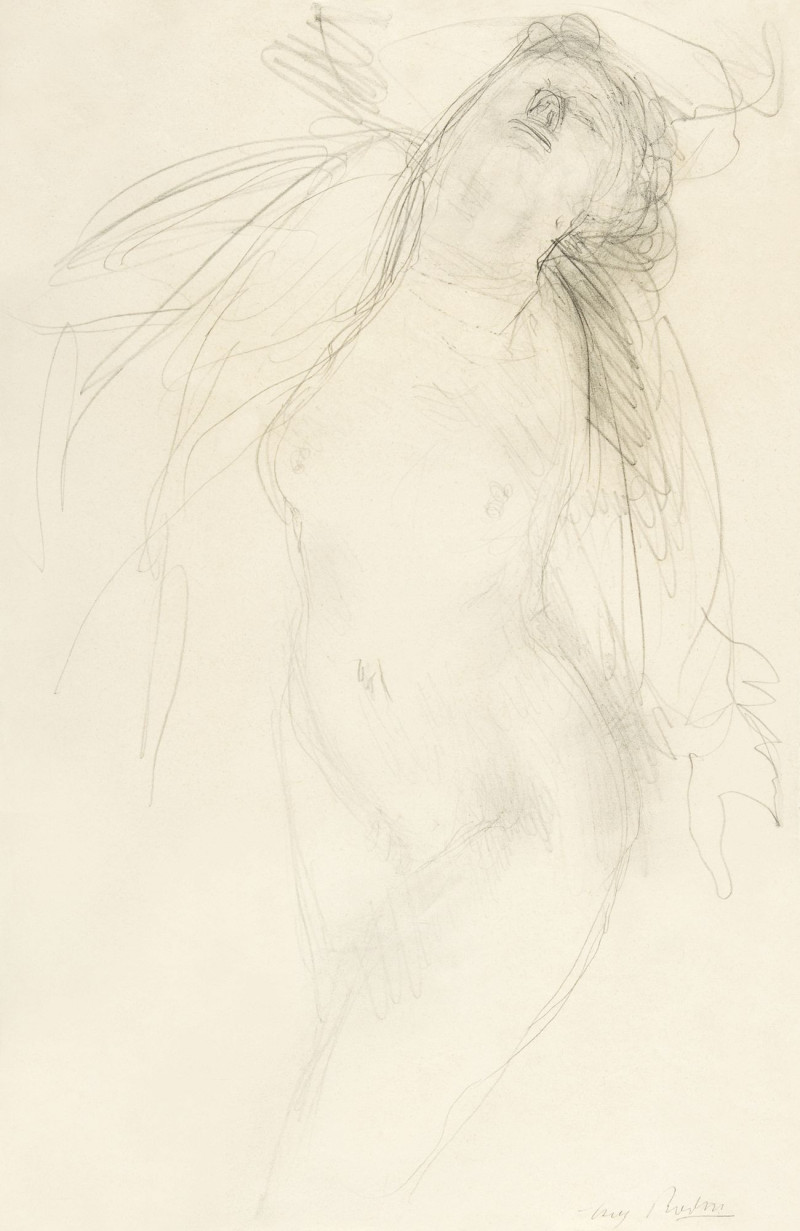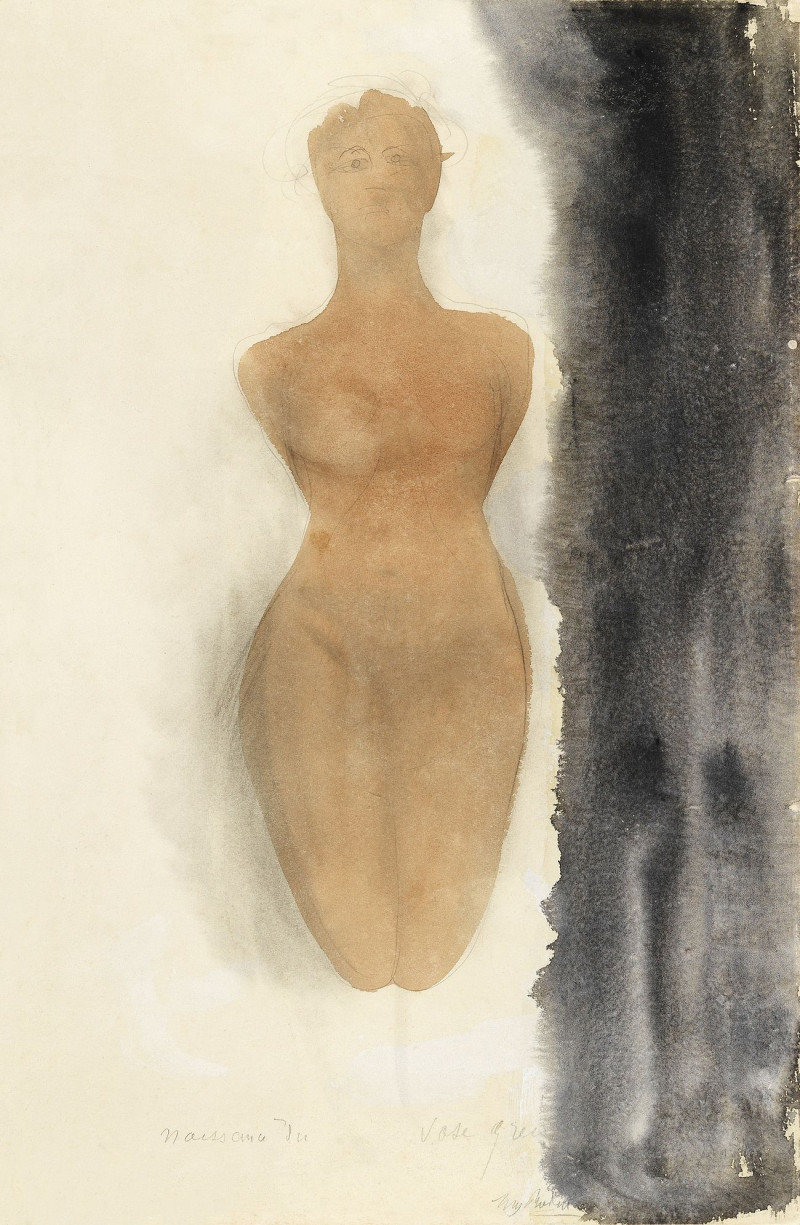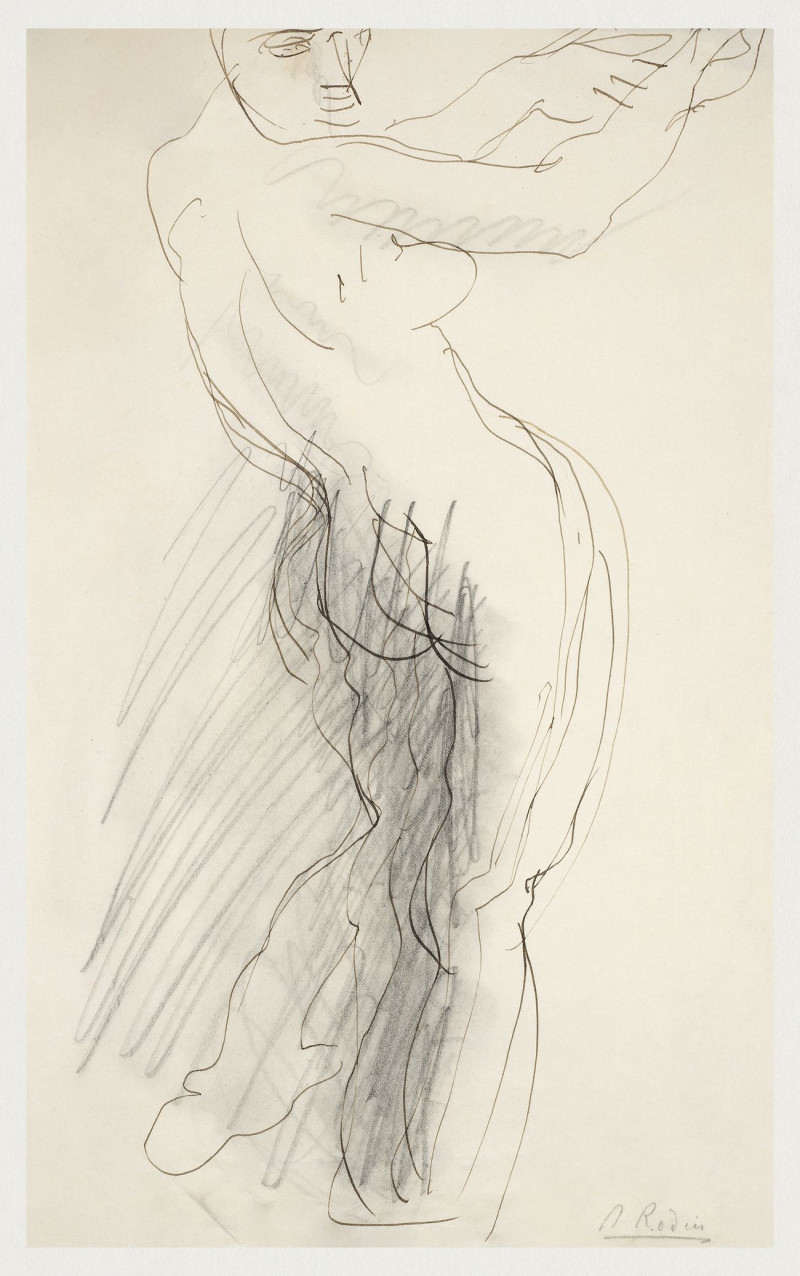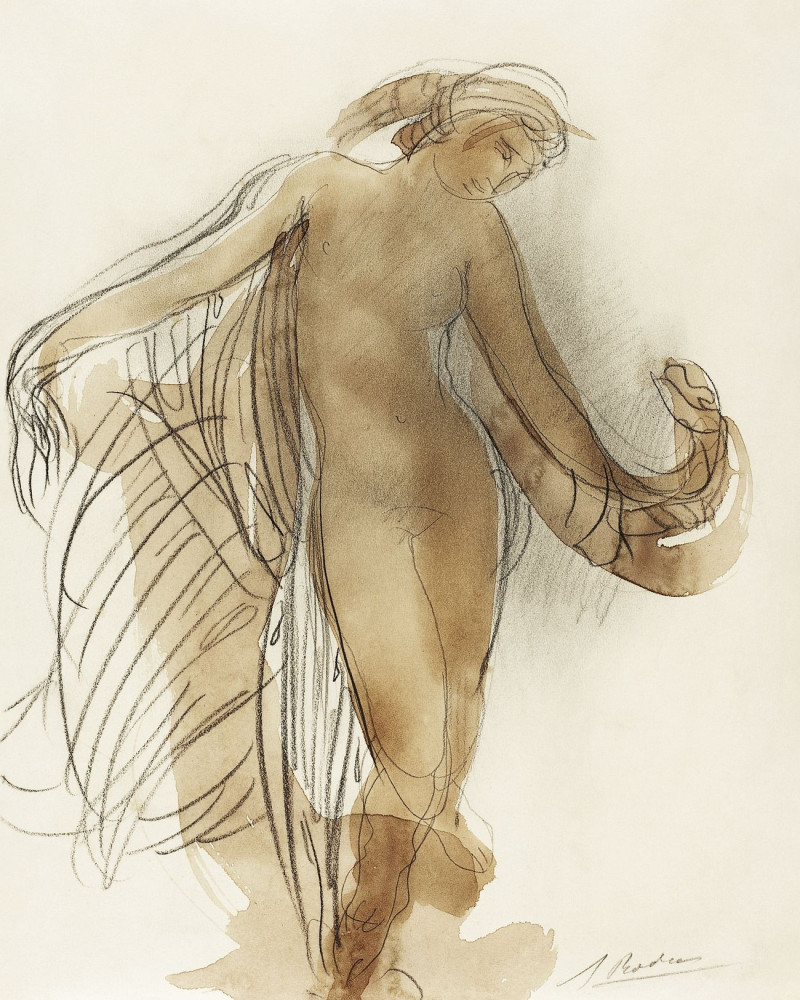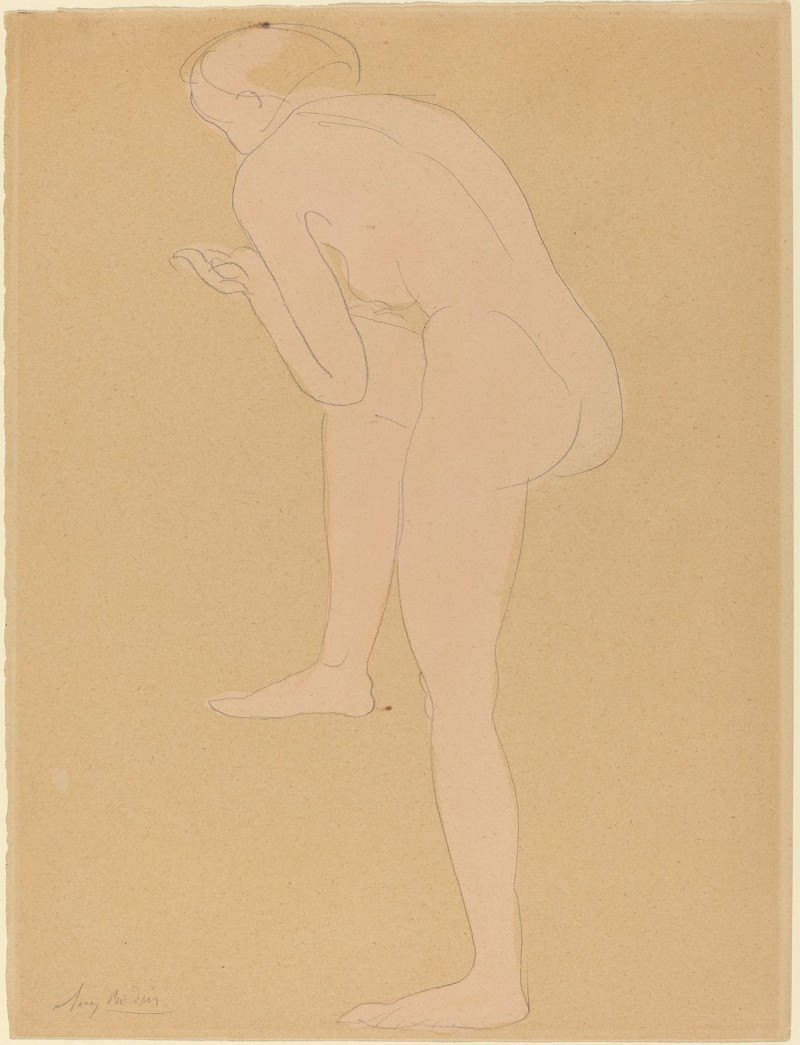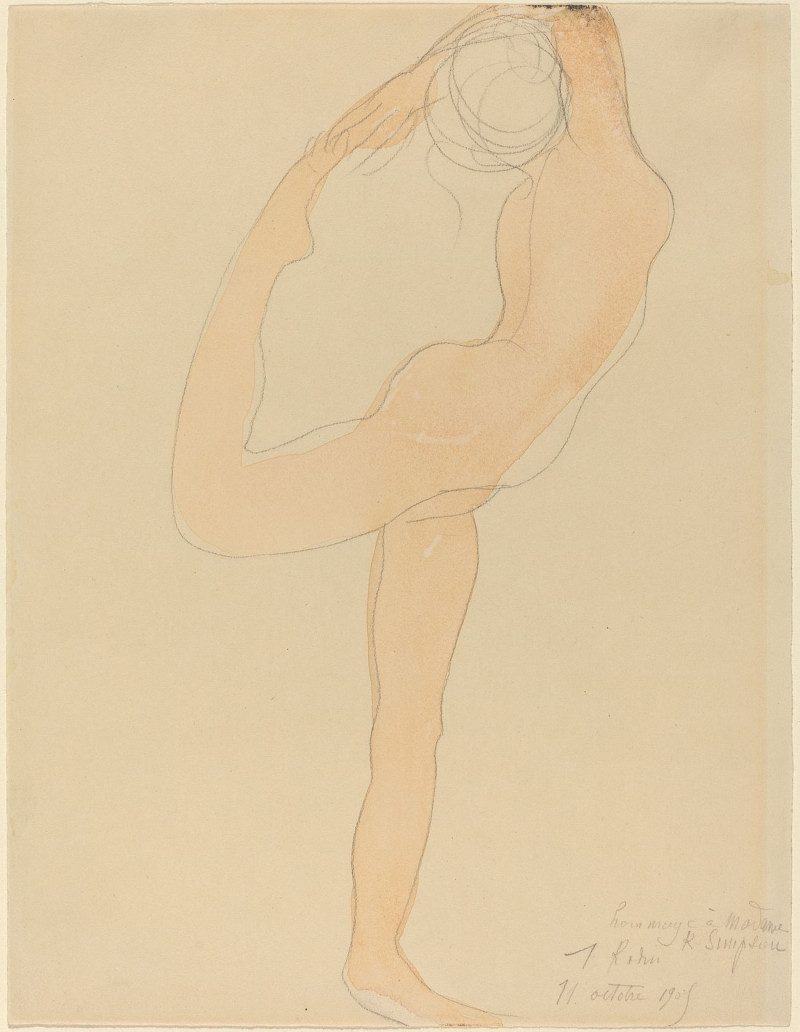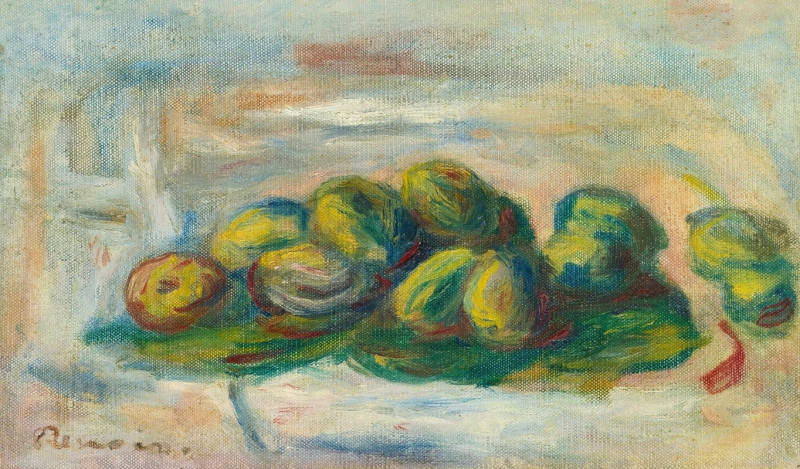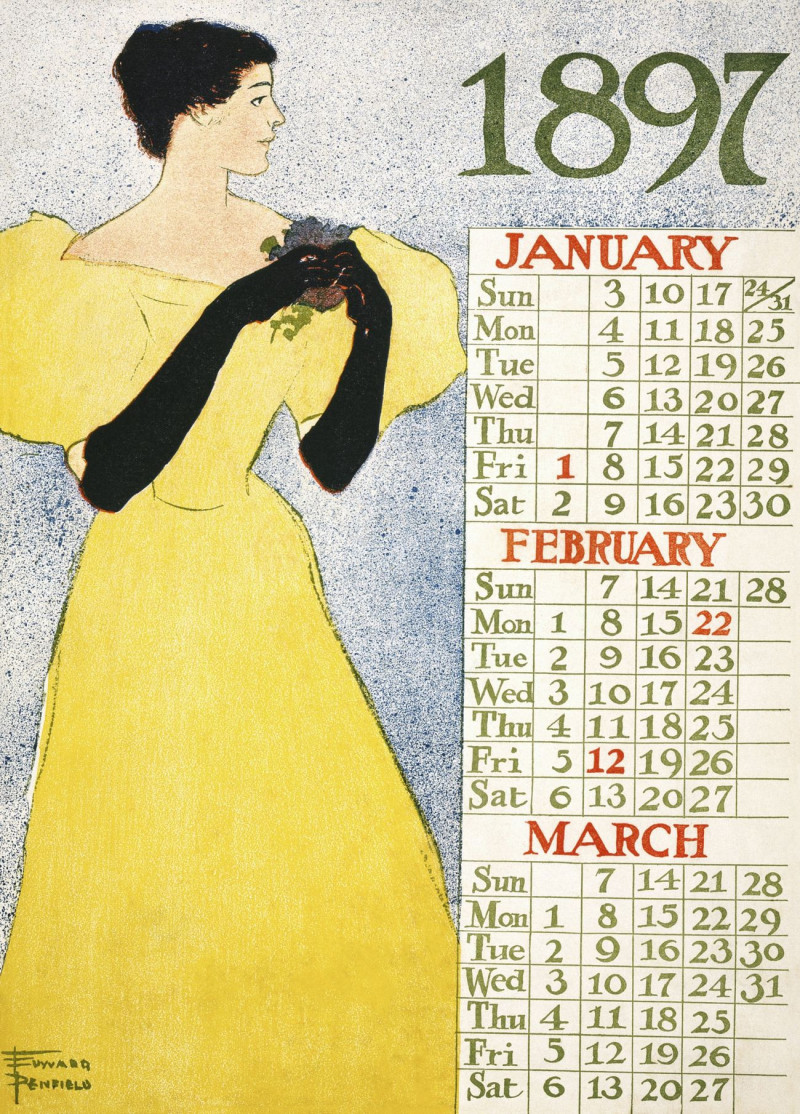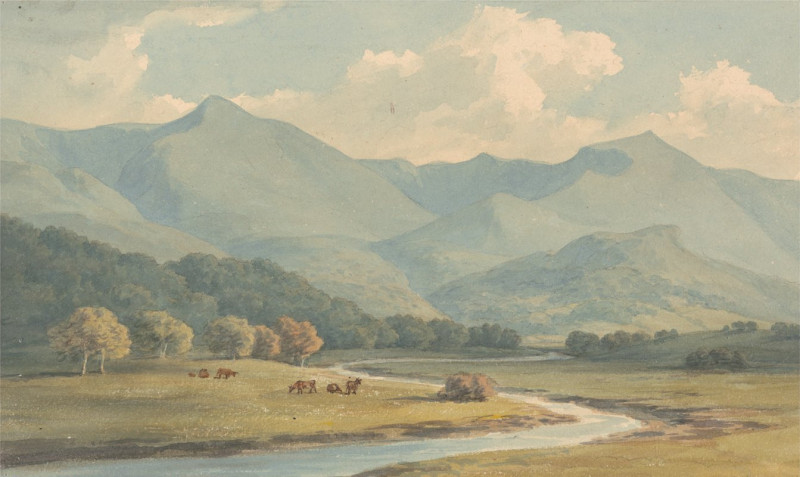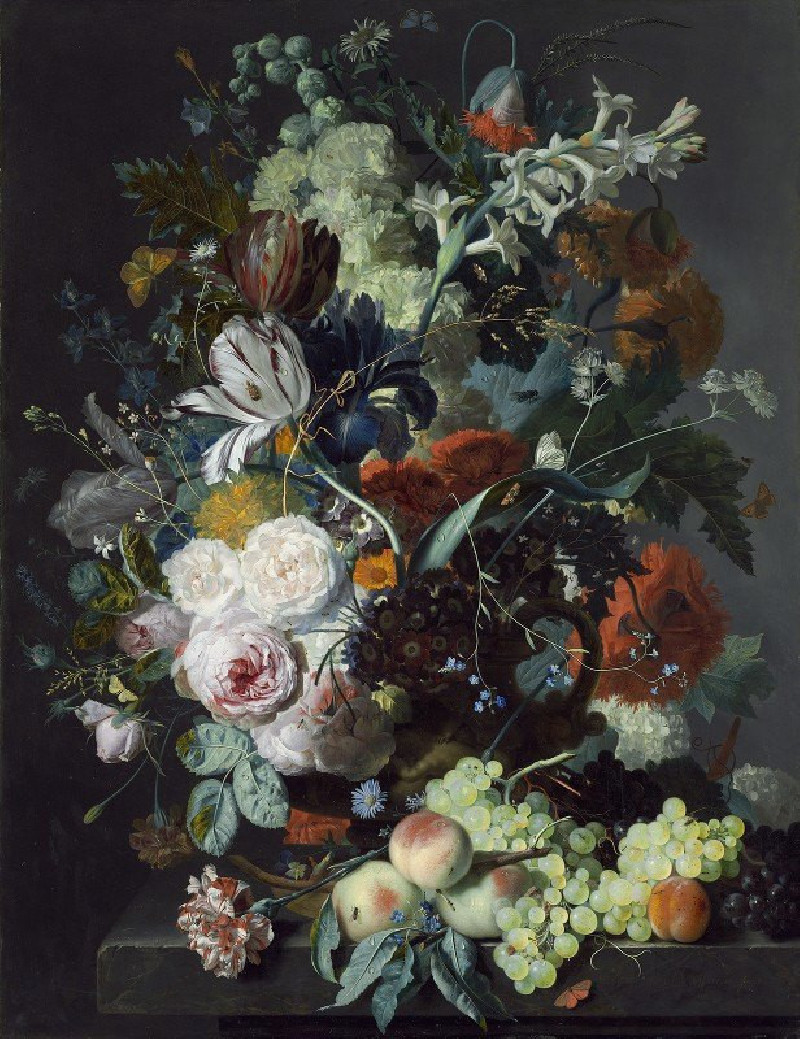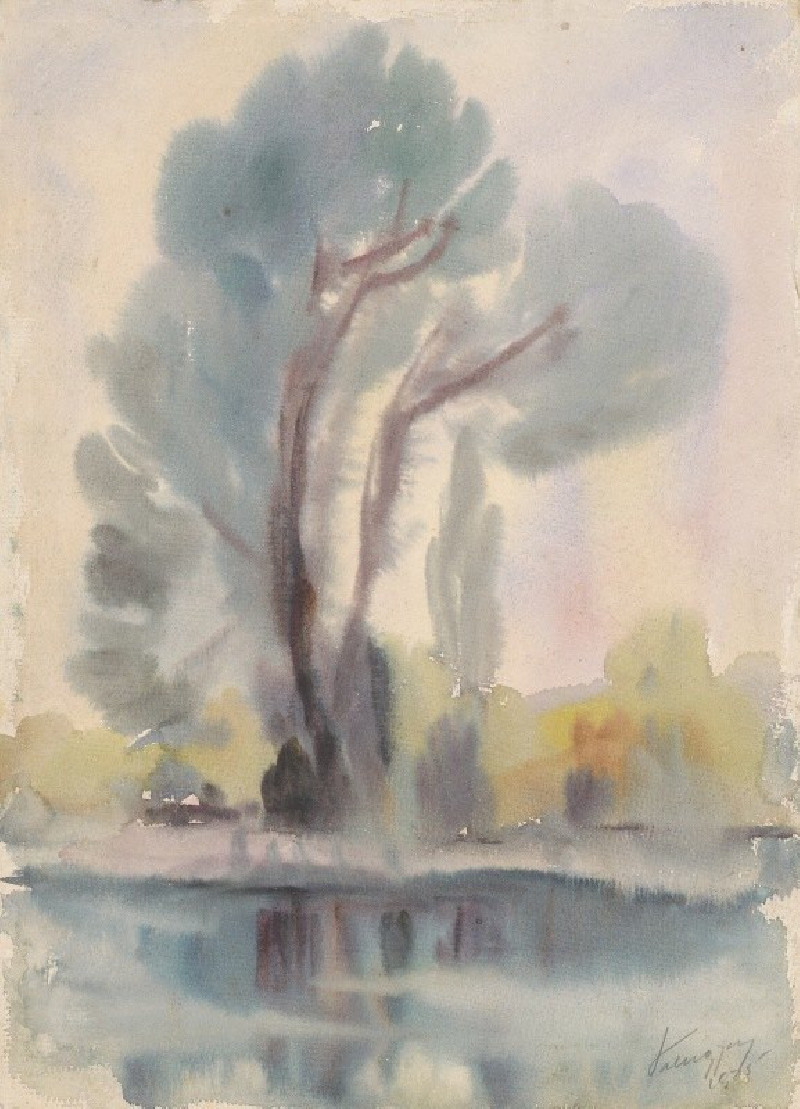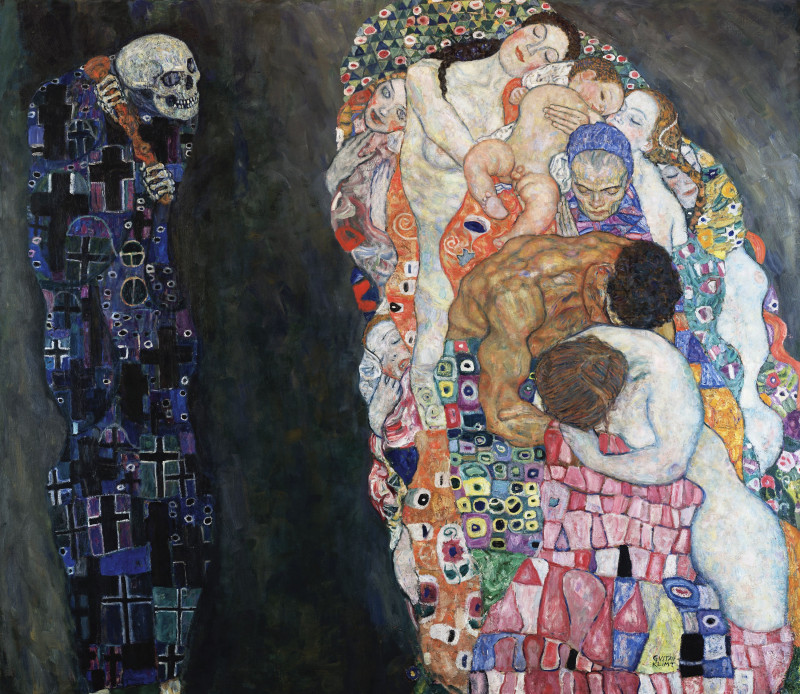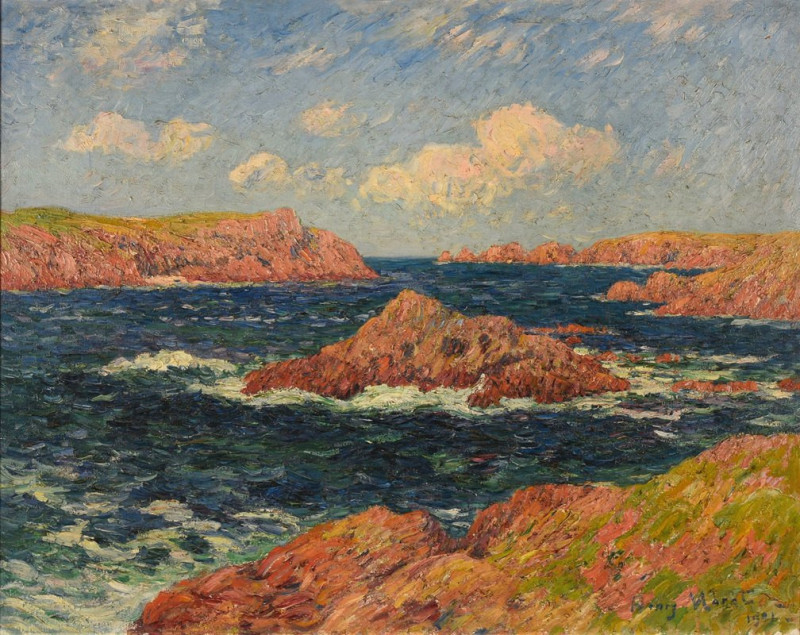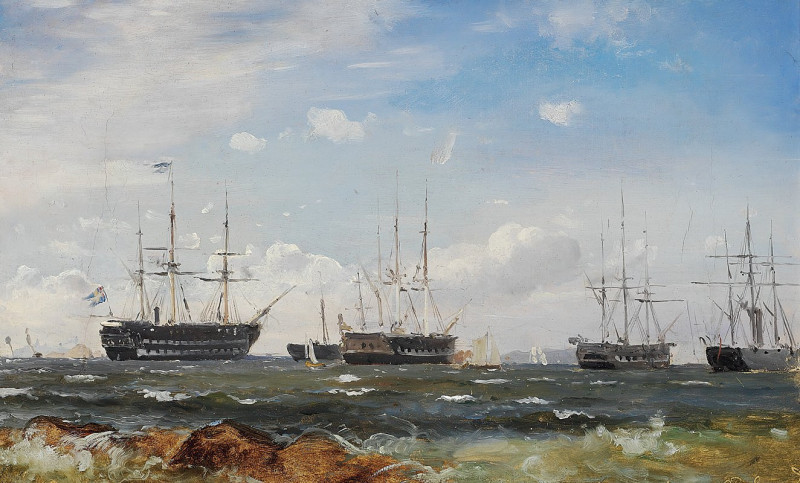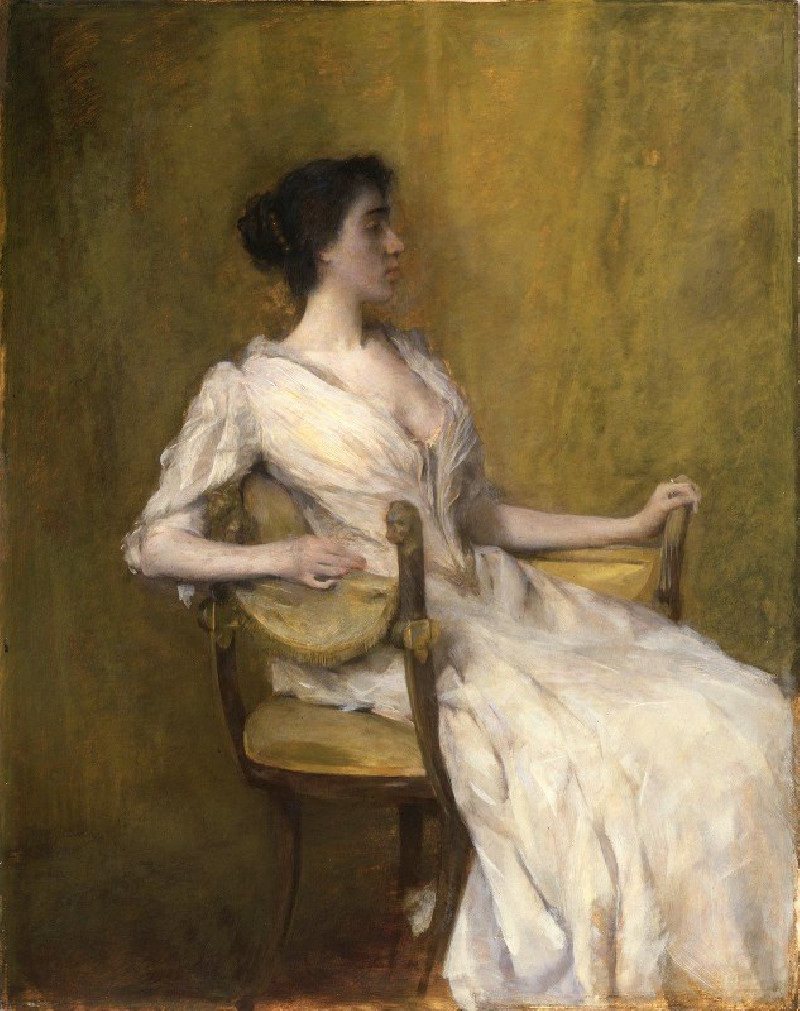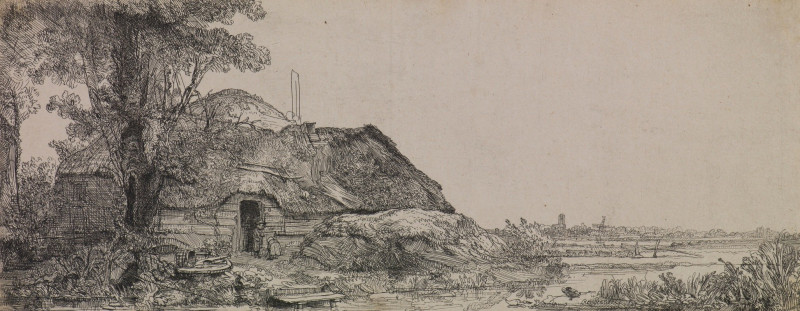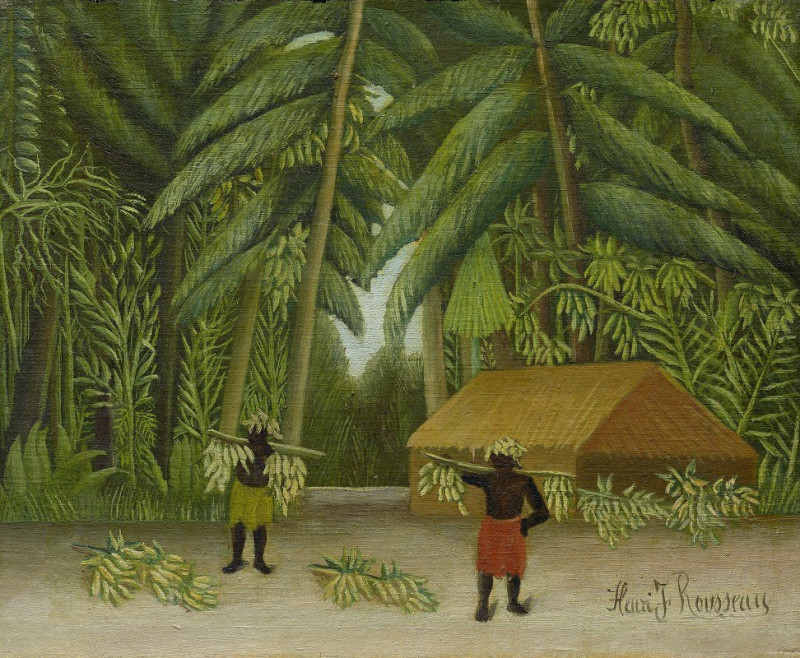Le Printemps (1883)
Technique: Giclée quality print
Recommended by our customers
More about this artwork
"Le Printemps," an arresting etching crafted by the illustrious French sculptor Auguste Rodin in 1883, captures the invigorating spirit of Spring in a dynamic and expressive form. This artwork deviates from Rodin’s more commonly recognized medium of sculpture, showcasing his versatility and keen eye for detail in the realm of printmaking.The etching portrays a robust, muscular figure in mid-motion, whose body seems to burst forward from the confines of an unseen barrier. The figure's powerful limbs and the intense expression on its face convey a sense of vigorous movement and raw energy, embodying the force of nature awakening after winter’s stillness.Rodin’s masterful use of dynamic lines around the figure not only emphasizes speed and movement but also creates an ethereal backdrop that contrasts sharply with the solid, almost tangible form of the body. The swirling lines suggest the winds of change that accompany the arrival of spring, sweeping across landscapes and breathing life into the dormant."Le Printemps" invites viewers to not only admire the physical prowess represented but also to delve into the thematic layers of rebirth and renewal inherent to the season of spring. It is a profound reminder of nature's endless cycle of revival, portrayed through the lens of Rodin's deep artistic perception.This piece is a celebration of human form and natural power, compelling and rich in symbolism, perfect for those who seek art that stirs the soul and provokes thought.
Delivery
Returns
Rodin was born into a poor family. After earning a living through sculpting decorative stoneworks, he entered art school. He then applied a craftsman-like approach to his work and modeled the human body with the naturalism that latterly became his unique style. Considered as the founder of modern sculpture, Rodin's original works clashed with predominant figurative sculpture from traditional themes of mythology and allegory since he celebrated individual human physicality.

